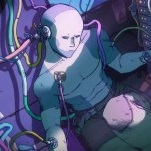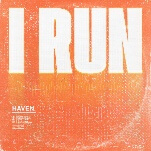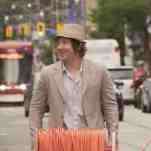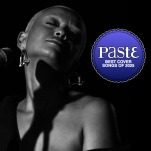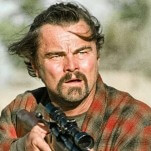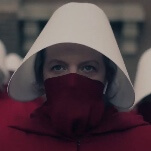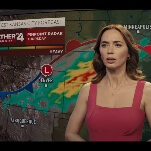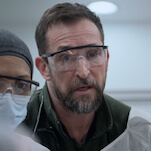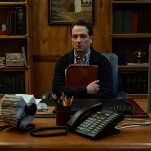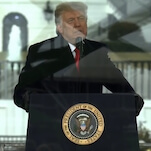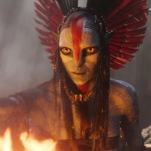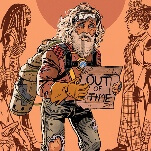The New Cult Canon: Babe: Pig In The City
"It's a dog-eat-dog world, and there aren't enough
dogs to go around."
Would a sentiment like that ever be uttered in a
children's film today? It's only been a decade since Babe: Pig In The City—George Miller's
glorious fiasco of a sequel to the sleeper hit Babe—was shuffled in and
out of theaters, but it feels like a lifetime ago. We're now in the age of cute
anthropomorphized animals, not of the Babe variety, but of the kind voiced by wisecracking
comedians bringing their G material. And these films have been scrubbed of any
darkness and shadow, as if the Barney-addled children of today need to be shielded
from anything remotely scary or imposing. Can you imagine Pinocchio being released today? Or The
5,000 Fingers Of Dr. T? Even The Wizard Of Oz?
Take Barnyard, an offensively inoffensive animated
comedy released a couple of years ago. Most people, if they have any memory of
that movie at all, recall that the male cows on its untended farm full of
"party animals" have udders. Now, I'm actually willing to forgive the bull
udders as some sort of bizarre, whimsical, Gary Larson-esque touch. Here's what
I found unforgivable in Barnyard: These udder-bulls produce nothing; they die and they're buried in the fucking
ground.
No porterhouse steaks. No rump roast. No Grade-Z ground beef for school lunches.
To me, it's unseemly for a film to deny that farms produce the things we eat;
part of growing up a meat-eater is acknowledging that a cow (not unlike the one
voiced by King Of Queens funnyman Kevin James) was hacked up into that Happy Meal you
picked up on the way home from the theater.
Though still a much gentler, lighter film than its
sequel, Babe
opens by dispelling any such illusions. Were it not for divine chance (and his
general runty-ness), our hero might have joined the sows herded onto a meat
truck, which to the naïve eyes of Babe and other pen-dwellers, looks like a
ticket to paradise. As far as they know, the pigs selected to leave the pen are
so happy with their new home that none of them ever come back. From the first
scene, the film is upfront about the fact that bacon, ham, and pork chops come
from the same "wonderful, magical animal," as Homer Simpson once put it. And
though Babe
goes on to tell the story of a pig rescued from delicious destiny through his
unlikely gifts as a sheepdog, it doesn't lie to kids about where he'd otherwise
end up.
As its title makes clear, Babe: Pig In The City leaves the farm for the
more uncertain perils of a sprawling metropolis. Stepping behind the camera
after co-writing (with director Chris Noonan) and producing Babe, Miller sacrifices none
of the hyperkinetic style he brought to the three Mad Max movies and the underrated Lorenzo's Oil,
which made something operatic out of disease-of-the-week material. Seen through
the eyes of his loveable, often Damon Runyon-esque animals, Miller's urban
landscape is an overwhelming, frightening, chaotic, and sometimes cruel place,
and the film makes no attempt to soften it up for the younger set. Off the
farm, these creatures are as lost as the wayward boys sent to "Pleasure Island"
in Pinocchio,
though Miller doesn't manage anything quite as chilling as a curse that
transforms young hoodlums into donkeys. (Though Mickey Rooney as a clown, which
I'll discuss in a bit, comes awfully close.)
Before getting into the manic, dystopian elements
that have given Pig In The City cult status, it should be said that the sprawling
Everycity Miller and his technical wizards have created is extraordinarily
beautiful. Seen from afar, it's a flourishing amalgam of the world's major
city, squeezing in landmarks from the Statue Of Liberty to the Eiffel Tower to
the Golden Gate Bridge to the Sydney Opera House in Miller's native Australia.
The streets have their dark corners, to be sure, but they're also lined with
cobblestone pathways and Venetian canals that sparkle with blue-green water.
Some critics dismissed the film as irredeemably ugly, but in this clip, Babe's
first look at the city provides jaw-dropping evidence to the contrary:
Such moments are parsed out pretty stingily,
however, as Babe and his masters have to overcome all sorts of unfortunate
setbacks. Fresh off their sheep-dogging triumph, Babe and the beloved Farmer
Hoggett (James Cromwell) return to a hero's welcome, but back at the farm,
things go haywire in a hurry. In the first of many inspired, elaborate Rube
Goldberg setpieces that occur throughout the film, Babe tries to help Farmer
Hoggett fix the water pump, but winds up sending his master careening down the
well. With Farmer Hoggett horribly injured and Mrs. Hoggett (Magda Szubanski)
overwhelmed by the task of tending to her ailing husband and the farm, it isn't
long before men in suits come to threaten foreclosure. So as a last-ditch
effort, Mrs. Hoggett decides to capitalize on Babe's sheepherding celebrity by
accepting a lucrative offer for the pig to appear at a mega-fair in the big city.
They barely make it past the airport. A
drug-sniffing beagle, eager to make the pig's acquaintance in baggage holding,
brags about all the rewards he gets for barking next to suitcases. He
demonstrates this by barking on top of Babe's crate, leading authorities to
seize the pig and interrogate poor Mrs. Hoggett as a drug runner. After
subjecting Mrs. Hoggett to certain "procedures"—a word the narrator
emphasizes to suggestive effect—the authorities let them go, but not in
time for them to make the fair. Unable to get a flight back home for a couple
of days, they venture out into a hostile city, finally landing at a hotel that
houses animals in secret.


